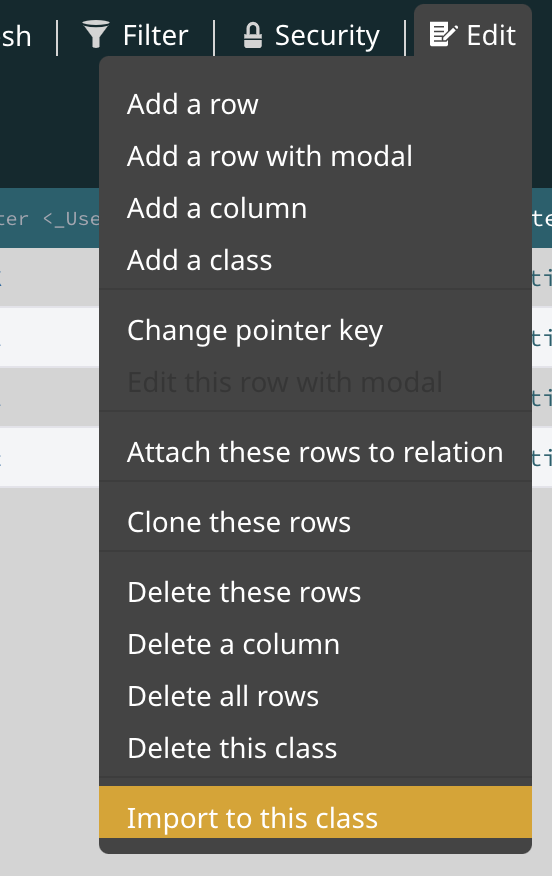Importing and exporting data with CSV
You can import and export data to/from your cloud service in the CSV (Comma Separated Values) format. This is done in the cloud services dashboard.
To export, browse the data for a specific record class and then you find the export commands in the toolbar at the top.

You can either export all records in a class (max 10K) or only the selected records. Select an option and then save the exported CSV.
To import a CSV you must also browse to the record class that you want to import into. Then you will find the import command in the Edit menu at the very bottom.

Click and then pick the CSV file on your computer that you want to use for import. The CSV file must follow a certain format for the import to work well.
String
The input will be assigned directly as a string.
Boolean
When the column data type is a boolean, there are a few different formats that are possible:
"True" // == true
"true" // == true
"1" // == true
1 // == true
"FalsE" // == false
"false" // == false
"0" // == false
0 // == false
Number
When the column data type is a number, it will convert the input to a number and assign if the value is not invalid or NaN.
Date
Everything that is available via new Date(...) will be possible to import.
For example:
"Thu Apr 13 2023 10:07:29 GMT+0200 (Central European Summer Time)"
"2023-04-13T08:02:46.447Z"
"Thu, 13 Apr 2023 08:06:11 GMT"
Object
You can import an object type property by specifying it as JSON:
{
"some_property":10
}
Array
Properties of array types can also be provided as JSON.
[1,2,3]
GeoPoint
A propety of type GeoPoint can be imported either as a string with latitude and longitude:
"30,30"
Or as an object with lat/long as properties:
{"latitude": 30, "longitude": 30}
Pointer
A point is simply a string with the Id of the target record.
Relation
This is currently not supported.
File
{
"url": "path-to-file",
"name: "filename.png"
}